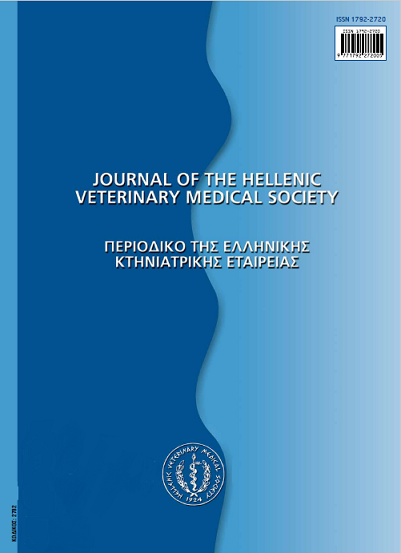Prevalence of feline hyperthyroidism in Greece

Abstract
Hyperthyroidism is the most common endocrine disease of cats and usually occurs in middle-aged to older animals. The primary aim of this study was to determine the prevalence of feline hyperthyroidism in Greece, and a secondary aim was to compare the clinical signs, haematological and serum biochemical findings between hyperthyroid and non-hyperthyroid cats.
A total of 80 cats, six years of age or older, were prospectively enrolled. The diagnosis of hyperthyroidism was based on serum concentrations of total thyroxine (measured by a solid-phase chemiluminescent competitive assay) and free thyroxin (measured by an equilibrium dialysis radioimmunoassay).
Hyperthyroidism was diagnosed in 4/80 (5%) of the cats. Clinical and laboratory findings that were significantly more common in hyperthyroid compared to the non-hyperthyroid cats included a palpable thyroid nodule, depression-lethargy, dyspnoea, and decreased blood urea nitrogen concentration.
Feline hyperthyroidism appears to be relatively common in Greece and routine measurement of thyroid hormone concentration should be considered in all middle-aged and older cats.
Article Details
- How to Cite
-
Kokkinaki, K., Xenoulis, P., Steiner, J., Suchodolski, J., Mylonakis, M., & Saridomichelakis, M. (2025). Prevalence of feline hyperthyroidism in Greece. Journal of the Hellenic Veterinary Medical Society, 76(2), 9025–9032. https://doi.org/10.12681/jhvms.35138
- Issue
- Vol. 76 No. 2 (2025)
- Section
- Research Articles

This work is licensed under a Creative Commons Attribution-NonCommercial 4.0 International License.
Authors who publish with this journal agree to the following terms:
· Authors retain copyright and grant the journal right of first publication with the work simultaneously licensed under a Creative Commons Attribution Non-Commercial License that allows others to share the work with an acknowledgement of the work's authorship and initial publication in this journal.
· Authors are able to enter into separate, additional contractual arrangements for the non-exclusive distribution of the journal's published version of the work (e.g. post it to an institutional repository or publish it in a book), with an acknowledgement of its initial publication in this journal.
· Authors are permitted and encouraged to post their work online (preferably in institutional repositories or on their website) prior to and during the submission process, as it can lead to productive exchanges, as well as earlier and greater citation of published work.



